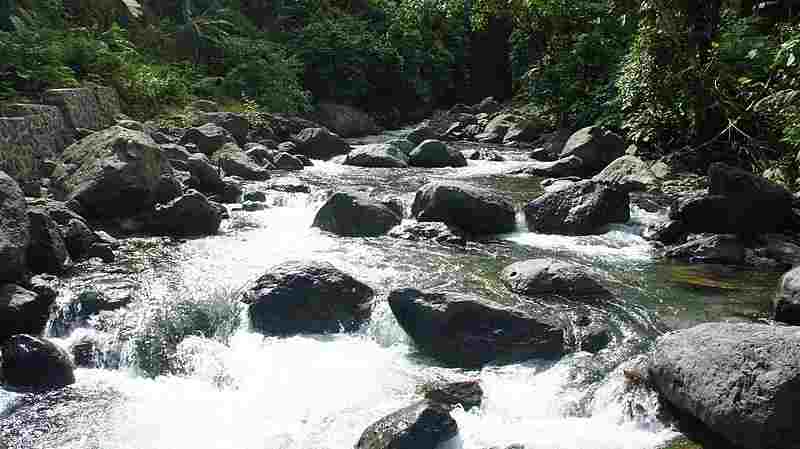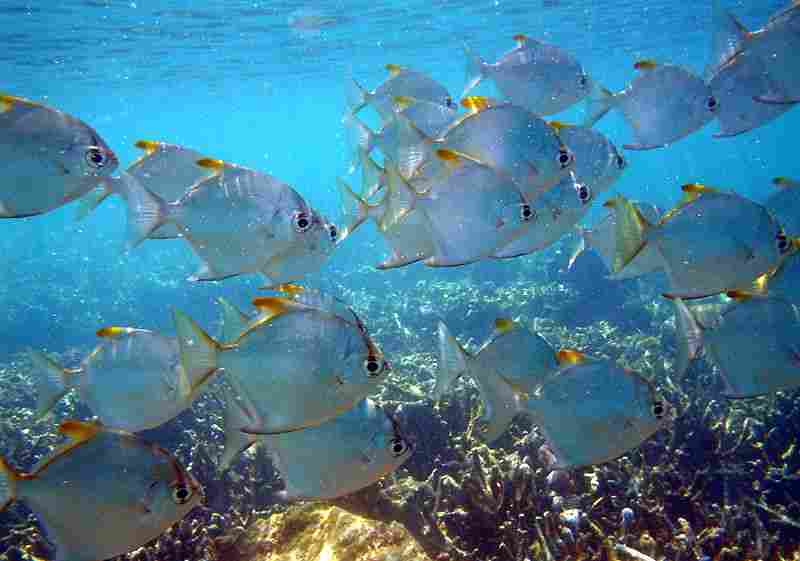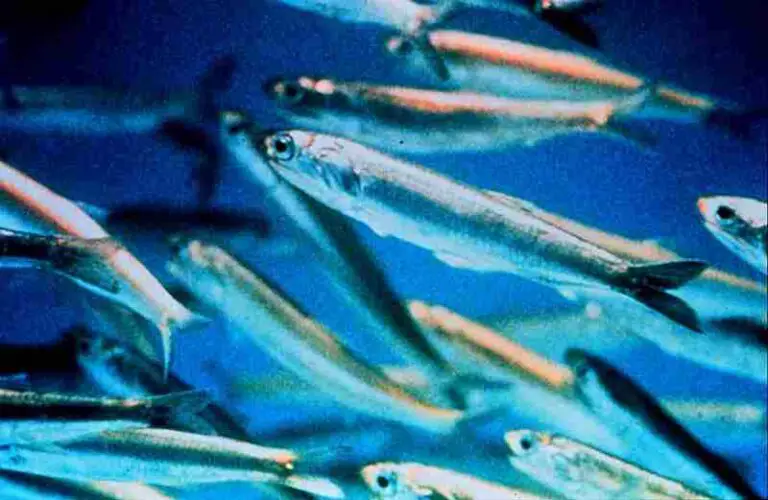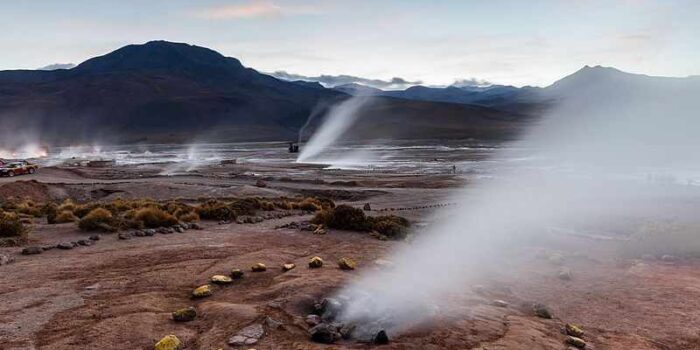7 Abiotic Factors in Freshwater Ecosystems Discussed
Abiotic factors in freshwater ecosystems are; sunlight, water, dissolved gases, physicochemical parameters, sediments, rocks, and nutrients.
This article discusses abiotic factor in freshwater ecosystems and their ecologic importance, as follows;
1). Sunlight (as one of the Abiotic Factors in Freshwater Ecosystems)
Light is an important abiotic factor in freshwater ecosystems, with multiple ecological functions.
As a non-living element, light plays a fundamental role in shaping the function and structure of these aquatic habitats.
Solar radiation is the primary source of light in freshwater ecosystems, and its intensity and availability influence various trophic interactions and biological processes among organisms.
Ecologic Importance of Sunlight in Freshwater Ecosystems
The ecological importance of sunlight in freshwater ecosystems can be traced to its role in photosynthesis, primary production, water column stratification, organic adaptation, predator-prey interactions, habitat structuring, and oxygen production.
Sunlight is an essential ingredient for photosynthesis; the process whereby algae, vascular and non-vascular plants, convert light energy into chemical bioenergy (stored in the form of glucose).
This energy forms the basis on which the aquatic food chain is built, by providing nutrition for primary producers, such as aquatic plants and phytoplankton.
The amount of light available in the freshwater biome, directly affects primary productivity and biomass formation [7].

Areas with ample supply of sunlight, tend to support more diversity and abundance of plant life, which in turn lead to increased food availability for herbivores and higher consumers.
In freshwater bodies, the intensity of light tends to decrease with depth as a result of light absorption and scattering by suspended particles and water molecules. This light-intensity gradient influences the distribution of algae and aquatic plants (restricting them to depths with sufficient light supply), as well as the behavior and habitat preference of aquatic organisms.
Thermal stratification can also be attributed to sunlight in the freshwater biome.
Light rays from the sun are accompanied by infrared waves which possess thermal energy.
Heat from the sun leads to thermal stratification in freshwater ecosystem [4]. Sunlight causes warming of the water surface, and creates temperature layers, which, in turn, affect other dynamics like the availability of oxygen and cycling of nutrients for aquatic organisms.
In many freshwater species, sunlight provides the primary cues for circadian rhythms. Natural cycles driven by light availability, influence the behavior, reproductive activities, and feeding patterns, of aquatic organisms.
Predator-prey interactions are also influenced by light availability in freshwater ecosystems. Predators usually rely on visual cues to locate, identify and capture their prey; so that changes in light intensity can directly impact predation rates.
Complex habitat structures are formed by the influence of sunlight on the distribution and growth of aquatic vegetation. These habitat structures provide breeding sites and shelter for various aquatic species.
Oxygen cycling depend on light, which is the driver of photosynthesis.
Light energy serves as a trophic bridge that links abiotic and biotic factors in freshwater ecosystems. It is used by freshwater primary producers to produce biomass and release oxygen into the water, which contributes to the oxygen content and supports aerobic respiration of aquatic animals.
Status of Light as an Abiotic Factor in Freshwater Ecosystems
Light is a classic example of an abiotic factor in ecosystems, because it is a non-living components that impacts the adaptation and distribution of living organisms.
Other abiotic factors include temperature, pH, water availability, and salinity. In freshwater ecosystems, the availability of light has a profoundly influence on ecological functioning and dynamics of the entire ecosystem.
2). Water
Water is an essential abiotic factor in freshwater ecosystems, for its contributions as an ambient medium, to the ecological dynamics of these habitats.
The quality, movement and availability of water, all influence the distribution, adaptation, and survival of aquatic organisms, as well as the overall biodiversity and structure of the ecosystem.
Ecological Importance of Water in Freshwater Ecosystems
The ecological importance of water in freshwater ecosystems can be summarized to include; sustenance of life, nutrient translocation, oxygen dissolution, temperature regulation, habitat connectivity, erosion and sediment transport, dilution, economic value, and hydrological cycling.
Water is the primary medium that envelopes organic life in freshwater ecosystems. It provides a habitat for a broad variety of organisms, including fish, amphibians and microscopic plankton, and also supports the reproduction and growth of aquatic plants.
Nutrient transport is also facilitated by water, which serves as a conduit for the translocation of essential nutrients like phosphorus, carbon and nitrogen, throughout the aquatic ecosystem.
Aquatic plants and algae take up nutrients dissolved in the water column, thereby initiating the food chain and supporting primary production.
Water plays a key role in the dissolution of oxygen, which is itself vital for the survival of aquatic organisms. Oxygen is absorbed from the atmosphere into the water column, and is also produced in-situ by autotrophs through photosynthesis, for the benefit of the entire ecosystem.
Temperature regulation is a function of water, due to its a high heat capacity [1], which enables it to absorb and retain significant amounts of heat energy.
This attribute of water helps regulate the temperature of the aquatic ecosystem, by buffering against rapid and/or excessive temperature fluctuations, and creating a thermally-stable environment for aquatic life.
Connectivity is established between multiple freshwater habitats through the flow of water in rivers and streams.
It allows for the free movement of organisms, facilitating migration, gene-flow, and dispersal, migration among different native populations.

Erosion and transport of sediments are related roles played by water, which is a prominent agent of erosion in fluvial environments [3].
Water is instrumental in erosion processes, helping to shape the ecosystem, and creating diverse microhabitats, including wetlands and dynamic riverbanks. It also transports eroded sediments, which can influence nutrient cycling.
Dilution and dispersal of pollutants can be carried out by water currents in freshwater biomes.
This reduces the severity and rate of water pollution, and mitigates the potential negative impacts of such hazards on aquatic organisms.
However, water quality can be negatively impacted when pollutants exceed the assimilative capacity of the freshwater ecosystem, leading to severe pollution and ecological imbalances.
Due to the abundance of water in them, freshwater ecosystems, including rivers, wetlands, lakes and ponds, have significant value as economic and recreational assets. These water bodies provide opportunities for tourism, fishing, and water-based industries such as those in sustainable agriculture, all of which contribute to local economies.
Freshwater ecosystems are integral constituents of the global hydrological cycle. They contribute to hydrological processes by storing and releasing water, so that both regional and global water availability, as well as climatic conditions, are regulated through their influence..
The diversity of species that can be found in freshwater ecosystems, is significantly and directly affected by water availability. Clean and abundant water in the ecosystem, supports diverse communities of aquatic organisms like invertebrates, fish, and plants.
3). Dissolved Gases (as one of the Abiotic Factors in Freshwater Ecosystems)
Dissolved gases, especially dissolved oxygen (DO), are critical abiotic factors in freshwater ecosystems, due to their influence upon the wellbeing and ecological dynamics of aquatic life.
DO is a measure of the amount of oxygen gas dissolved in water [5], and its value is a crucial determinant for the survival and activities of aquatic organisms.
Ecological Importance of Dissolved Gases in Freshwater Ecosystems
The ecological importance of dissolved gases in freshwater ecosystems can be highlighted on the basis of oxygen supply, biotic interactions, aerobic decomposition, trophic dynamics, temperature and salinity effects; mixing and currents, atmospheric exchange, and eutrophication.
The availability of dissolved oxygen is essential for the respiration and survival of most aquatic organisms, across all levels of the aquatic food web/chain/energy pyramid.
These aquatic organisms, extract oxygen from the water, which they use to support their metabolic processes, such as growth, digestion and energy production.
Sufficient dissolved oxygen has an effect on the abundance and distribution of aquatic species. Some organisms have evolved to tolerate low-oxygen environments, while others require higher DO levels to function effectively.
Several decomposer organisms in freshwater ecosystems, break down organic matter through the process of aerobic decomposition, which relies on oxygen. Adequate DO levels support the effective and efficient breakdown of organic material, with consequent recycling nutrients and maintenance of water quality.
Availability of dissolved oxygen; influences trophic interactions within the freshwater ecosystem. It affects the behavior, capacity and distribution of primary producers (like phytoplankton) and consumers (like fish and zooplankton).
Water temperature and salinity affect the amount of dissolved oxygen that can be contained in water [11]. Cold water can hold more dissolved oxygen than warm water, and freshwater generally contains more oxygen than saline water.
Abiotic processes such as upwelling, mixing of water bodies, and current dynamics, play a role in influencing the concentration of dissolved oxygen in freshwater. Mixing can introduce oxygen-rich water from different sources into the water column, while stratified or stagnant water bodies may have lower DO concentration.
Atmospheric exchange of gases between the atmosphere and the surface of freshwater bodies, is a crucial process that influences dissolved oxygen levels. The action of wind and waves, as well as water turbulence, all enhance the transfer of atmospheric oxygen into the water.
Eutrophication is caused by excessive nutrients in freshwater bodies, which often come from human activities [6]. The process of nutrient enrichment can cause algal blooms, which consume large amounts of dissolved oxygen during their metabolism and biodegradation, leading to oxygen-depleted conditions (hypoxia) that are harmful to aquatic life.
4). Physicochemical Parameters
Physicochemical parameters are variable, physical and chemical characteristics of a given environment of medium; such as soil or water.
In a freshwater ecosystem, these parameters are often estimated for water, which is the ambient medium; and they play a role in determining the conditions and suitability of the aquatic habitat, for various organisms.
Ecologic Importance of Physicochemical Parameters
The ecologic importance of physicochemical parameters as non-living components of the ecosystem can be discussed by listing these parameters, what they represent, and their implication(s) for the ecosystem.
Physicochemical parameters in freshwater bodies include; temperature; conductivity, dissolved oxygen (DO), pH, nutrient concentration, turbidity, total dissolved solids (TDS), salinity, and biochemical oxygen demand (BOD).
Temperature of water influences the metabolic rates, reproductive behavior, growth, and overall adaptation of aquatic organisms. It also affects the concentration dissolved oxygen in water; so that colder water is able to hold more oxygen than warmer water.
Conductivity is a measure of the ability of a medium or material, such as water in a freshwater ecosystem; to conduct electrical current, and indicates the presence of dissolved ions in the material or medium [9]. This parameter reflects the total concentration of dissolved salts and can provide insights into salinity levels, and overall water quality.
Dissolved Oxygen (DO) is critical for the survival of aquatic organisms. It supports aerobic decomposition and respiration, and maintains the balance of the ecosystem.
pH levels indicate the alkalinity or acidity of water. It influences the solubility and availability of minerals and essential nutrients to aquatic life. Most freshwater organisms have specific pH tolerance-ranges, and extreme pH levels can be detrimental to their populations.
Alkalinity is an estimate of the buffering capacity of the water against changes in pH. It is essential for preventing rapid fluctuations and stabilizing pH levels.
Nutrients occurring in various forms such as nitrates and phosphates, are essential for the growth of primary consumers; which in turn serve as food for consumers. However, excessive concentrations of nutrient s can lead to eutrophication and the growth of harmful algal blooms.

Turbidity is a measure of the clarity or cloudiness of water based on the presence and concentration of suspended particles [8]. It affects light penetration and intensity, thereby impacting photosynthesis and the distribution of aquatic autotrophs.
Total Dissolved Solids (TDS) estimates the total concentration of dissolved inorganic substances in water, such as minerals, metals and salts. It influences water quality and can affect the biological success of aquatic organisms.
Salinity is the concentration of dissolved salts in water and is critical for distinguishing freshwater and marine ecosystems. It also determines biodiversity, as different species have varying salinity tolerances.
Biochemical Oxygen Demand (BOD) is a measure of the amount of oxygen consumed by microorganisms during the biodegradation of organic matter. It can serve an indicator of water degradation and the presence/concentration of organic pollutants.
5). Sediments (as one of the Abiotic Factors in Freshwater Ecosystems)
Sediments in a freshwater ecosystem refer to the particles of sand, silt, clay and organic humus that settle at the bottom of the water column.
These sediments are similar to other abiotic factors in freshwater bodies, in that they influence the dynamics of the ecosystem, and have measurable ecologic effects.
Importance of Sediments in Freshwater Ecosystems
Sediments are indeed abiotic factors in a freshwater ecosystem, because they are non-living components comprising mostly of inorganic minerals, that interact with biotic factors and affect the overall composition and functionality of the ecosystem.
The importance of sediments in freshwater include; microhabitat creation, nutrient cycling, filtration and clarification, biogeochemical cycling, erosion dynamics, oxygen regulation, algal growth, biodiversity support, food provision, and ecosystem health-indication.
Sediments provide important microhabitats for various ground-dwelling aquatic organisms, including some fish and small invertebrates. Many detritivorous, benthic species live in burrows within the sediments, utilizing them as both protective shelter and a source of food.
Nutrient cycling is another function of sediments, which serve as natural reservoirs for nutrients [10] in freshwater habitats. They accumulate and store detrital organic matter, and nutrients like phosphorus and nitrogen. Decomposers like bacteria, break down this organic matter, to release essential nutrients back into the water column for uptake and utilization by aquatic autotrophs.
Natural filtration is carried out by sediments which improve water clarity by trapping excess nutrients, and suspended particles, which may include pollutants from human systems. This process/function can improve water quality and maintain conditions suitable for aquatic survival.
Due to their nutrient-entrapping capability, sediments are involved in various biogeochemical cycles, including the nitrogen, phosphorus and carbon cycles. They store and subsequently release these elements, thereby affecting their availability.
Erosion control can be attributed to mechanically-resistant sediments that can act as a buffer against erosive water currents. Such sediments stabilize the riverbanks, lakebeds and shorelines, preventing excessive erosion and maintaining the basic morphology of the water body.
Oxygen regulation by sediments come from their interactions with the water column, which influence oxygen levels in the freshwater ecosystem. Some sediments may become anoxic (low in oxygen-concentration) under certain conditions, leading to the establishment of ecological niches that favor anaerobic organisms and processes.
Autotrophic growth is supported by sediments, which provide a substrate for the anchorage and growth of both benthic algae and submerged aquatic plants.
The diversity of physical and chemical properties in different sediments, create microhabitats that support a variety of aquatic species, and can enhance the overall biodiversity of the freshwater ecosystem.
Organic detritus that accumulates in sediments can serve as a food source for detritivorous organisms including certain some fish and arthropods. These organisms play a key role in nutrient cycling and energy transfer, within their habitat.
Lastly, freshwater sediments can be used as indicators of environmental health.
Changes in the composition and physical attributes of these sediments, can be studied to reveal the ecosystem's overall health as well as the environmental impacts of natural disturbances or human activities.
6). Rocks
Rocks in a freshwater ecosystem are abiotic factors similar in origin and composition to sediments, and interact with the living components of the ecosystem.
Ecological Importance of Rocks in Freshwater Ecosystems
The ecological importance of rocks in freshwater biomes can be analyzed in terms of habitat formation, algal growth, erosion control, water quality regulation, biodiversity support, nutrient cycling, physical structuring, recreational and economic value, contribution to geomorphic processes, and indication of environmental conditions.
Rocks may provide essential habitats for diverse aquatic organisms.
In flowing freshwater bodies like streams and rivers, rocks establish diverse microhabitats, including pools, runs and riffles. These microhabitats serve as breeding grounds, and shelter for a wide range of aquatic species.
Algal growth is supported by rocks in freshwater ecosystems, which provide suitable surfaces for algae attachment and growth. Algae are primary producers whose growth is crucial for freshwater food chains and nutrient cycling processes.

Rocks along lake shores and riverbanks, may help minimize fluvial erosion, by stabilizing sediments and soil masses. They act as rigid barriers that reduce the impact of water flow and protect the surrounding environment.
Water quality is regulated by rocks which can act as natural filters that help to purify water by trapping pollutants and suspended sediments. They enhance water clarity and improve photosynthesis to an extent, by preventing excessive sediment suspension.
Biodiversity in freshwater bodies, may find diverse habitats in the variety of rock types and assemblages in their habitat. This implies that rocks may support higher aquatic biodiversity.
Minerals in rocks, are constituents of nutrient cycling schemes, in freshwater systems. Through weathering and erosion, the rocks release essential elements like magnesium, potassium and calcium [12], which are essential for the growth and survival of aquatic organisms.
Physical structures created by large rocks in streams and rivers, affect water flow dynamics, and provide refuge for invertebrates and small fish, during periods of high flow or excessive predation.
Rocks in freshwater ecosystems contribute to the enhancement of recreational activities and tourism. They can also provide educational opportunities in geology and ecological studies.
The geomorphological configuration and processes of freshwater ecosystems are both influenced by rocks, which shape the course of streams and rivers, contributing to the formation of distinctive features like rapids, waterfalls and deep pools.

Lastly, the types and conditions of rocks in a freshwater ecosystem, can give insights into the geological processes and environmental history of the landscape.
7). Nutrients (as one of the Abiotic Factors in Freshwater Ecosystems)
Nutrients in a freshwater ecosystem are essential, and support the growth and productivity of aquatic organisms.
They can be described as compounds or elements that are required by organisms for various biological processes.
The main nutrients in freshwater ecosystems include; nitrogen, carbon, potassium, and phosphorus.
Ecological Importance of Nutrients in Freshwater Ecosystems
The ecological importance of nutrients in freshwater ecosystems, can be highlighted in terms of; primary production, growth and reproduction, nutrient cycling, trophic interactions, algal blooming, biodiversity, and water quality.
Nutrients are essential for the process of photosynthesis, by which primary producers like aquatic plants and algae, convert solar energy into energy-rich biomass. Primary production relies on nutrients to form the base of the food chain and provide energy for all organisms in the freshwater ecosystem.
Asides autotrophs, all aquatic organisms require nutrients for their reproduction and growth. Nutrients are the building blocks for cellular structures, and are important for developmental processes like the synthesis of DNA, and cell division.
Nutrients in a freshwater ecosystem are part of various biogeochemical cycles, such as the phosphorus, nitrogen and carbon cycles.
These cycles are built on processes like decomposition, nitrification and mineralization, which help to recycle nutrients back into the ecosystem, and ensure the availability of such nutrients for future generations of organisms.
Nutrient availability influences the distribution and abundance of various freshwater organisms. For example, nutrient-rich zones support higher primary production, leading to increased autotrophic biomass and diversity of herbivorous primary consumers, with ripple effects on higher trophic levels.
Excessive inputs of nutrient, particularly phosphorus and nitrogen from human outlets like sewage systems and agricultural runoff, can result in algal blooms. These blooms can cause eutrophication, and may harm aquatic life through oxygen depletion.
Nutrient availability affects species richness in freshwater ecosystems, because different species have varying nutrient requirements/preferences, and the distribution of nutrients in any given water body, can favor some species above others.
Lastly, water quality is tied to the dynamics of nutrients like nitrogen and phosphorus, which are essential for the growth of aquatic autotrophs. However, excessive nutrient loading can cause pollution, by degrading water quality and causing ecological imbalances.
Examples of Abiotic Nutrients in Freshwater Ecosystems
Examples of abiotic nutrients include; carbon, nitrogen, phosphorus, and potassium.
Carbon occurs in forms like bicarbonate (HCO3-) and dissolved carbon dioxide (CO2) in water. It is needed for photosynthesis and can serve as ingestible organic carbon for aquatic organisms.
Nitrogen occurs as ammonia (NH3), nitrite (NO2-), and nitrate (NO3-) ions in water [2]. It is a vital component of nucleic acids and proteins, and is essential for cellular functionality and growth.
Phosphorus occurs mainly as phosphate (PO43-) in water. It is useful for the synthesis of vital compounds like RNA, DNA, and ATP.
Potassium is present in freshwater as dissolved potassium ions (K+). It contributes to enzymatic processes and ionic balance.
Conclusion
Abiotic factors in freshwater ecosystem are;
1. Sunlight
2. Water
3. Dissolved Gases
4. Physicochemical Parameters
5. Sediments
6. Rocks
7. Nutrients
References
1). Abdulagatov, I.; Dvoryanchikov, A. I.; Kamalov, A. (1998). "Heat Capacities at Constant Volume of Pure Water in the Temperature Range 412−693 K at Densities from 250 to 925 kg·m-3." Journal of Chemical & Engineering Data. Available at: https://pubs.acs.org/doi/10.1021/je980046w. (Accessed 8 August 2023).
2). Akoto, O.; Nyantakyi, J. A. (2008). "Dissolved nitrogen in drinking water resources of farming communities in Ghana." Available at:
3). Balasubramanian, A. (2010). "Fluvial Landforms." Available at: https://doi.org/10.13140/RG.2.2.17116.39044. (Accessed 8 August 2023).
4). Herb, W. R.; Stefan, H. G. (2004). "Temperature Stratification and Mixing Dynamics in a Shallow Lake With Submersed Macrophytes." Lake and Reservoir Management 20(4):296-308. Available at: https://doi.org/10.1080/07438140409354159. (Accessed 8 August 2023).
5). Ibanez, J. G.; Hernandez-Esparza, M.; Doria-Serrano, C.; Fregoso-Infante, Singh, M. M. (2008). "Dissolved Oxygen in Water." Environmental Chemistry. Available at: https://doi.org/10.1007/978-0-387-49493-7_2. (Accessed 8 August 2023).
6). Khan, M. N.; Mohamed, F. (2014). "Eutrophication: Challenges and Solutions." Available at: https://doi.org/10.13140/2.1.3673.8884. (Accessed 8 August 2023).
7). Lewis, W. M. (2011). "Global primary production of lakes: 19 th Baldi Memorial Lecture." Inland Waters 1(1). Available at: https://doi.org/10.5268/IW-1.1.384. (Accessed 8 August 2023).
8). Ruegner, H.; Schwientek, M.; Beckingham, B.; Kuch, B.; Grathwohl, P. (2013). "Turbidity as a proxy for total suspended solids (TSS) and particle facilitated pollutant transport in catchments." Environmental Earth Sciences. Available at: https://doi.org/10.1007/s12665-013-2307-1. (Accessed 8 August 2023).
9). Rusydi, A. (2018). "Correlation between conductivity and total dissolved solid in various type of water: A review." IOP Conference Series Earth and Environmental Science 118(1):012019. Available at: https://doi.org/10.1088/1755-1315/118/1/012019. (Accessed 8 August 2023).
10). Shaughnessy, A. R.; Sloan, J. J.; Corcoran, M. J.; Hasenmueller, E. A. (2019). "Sediments in Agricultural Reservoirs Act as Sinks and Sources for Nutrients over Various Timescales." Wiley, Water Resources Research 55(3). Available at: https://doi.org/10.1029/2018WR024004. (Accessed 8 August 2023).
11). Sherwood, J. E.; Stagnitti, F.; Kokkinn, J.; Williams, W. D. (1991). "Dissolved oxygen concentrations in hypersaline waters." Limnology and Oceanography, Volume 36, Issue 2 p. 235-250. Available at: https://doi.org/10.4319/lo.1991.36.2.0235. (Accessed 8 August 2023).
12). te Pas, E. E. M.; Hagens, M.; Comans, R. N. J. (2023). "Assessment of the enhanced weathering potential of different silicate minerals to improve soil quality and sequester CO2." Front. Clim. 4:954064. Available at: https://doi.org/10.3389/fclim.2022.954064. (Accessed 8 August 2023).










